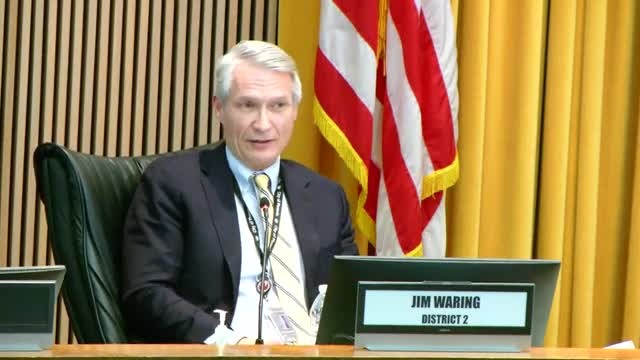Phoenix Councilman raises alarm over fire response disparities in District 2
January 08, 2024 | Phoenix, Maricopa County, Arizona

This article was created by AI summarizing key points discussed. AI makes mistakes, so for full details and context, please refer to the video of the full meeting. Please report any errors so we can fix them. Report an error »

In a recent Public Safety and Justice Subcommittee meeting held on January 8, 2024, city officials in Phoenix confronted pressing concerns regarding emergency response disparities across different districts. The discussion, led by committee members, highlighted significant differences in the number of emergency calls for service, particularly between District 2 and District 8, despite similar population sizes.
As the meeting unfolded, one council member pointed out that District 8 experienced over 20,000 more emergency calls than District 2, raising questions about the underlying reasons for this stark contrast. The council member expressed skepticism about whether health issues, such as heart attacks or fires, could account for such a discrepancy, suggesting that a deeper investigation was necessary.
In response, city officials acknowledged the complexity of the issue, noting that factors such as population density and response times play critical roles. They emphasized the need for collaboration with research institutions to analyze the data and understand the reasons behind the high call volume in certain districts. The officials recognized that some areas activate the 911 system more frequently, but a thorough study is essential to grasp the full picture.
The conversation also touched on the implications of these disparities for residents. The council member articulated concerns that residents in District 2 might feel underserved, as they pay taxes for emergency services that appear to be more efficiently utilized in other districts. This sentiment was underscored by the comparison to a product purchased from a store, where customers would naturally seek better service if they felt they were receiving less value.
The discussion further revealed a pressing need for additional fire stations, particularly in District 2, which has been described as having a "donut hole" in emergency coverage. The council member recalled past efforts to establish a fire station in the area and expressed frustration over the lack of progress in addressing the current response time challenges. With neighboring cities like Scottsdale planning new stations, the urgency for Phoenix to enhance its emergency services was palpable.
As the meeting concluded, officials were urged to provide clear communication to residents about the ongoing efforts to address these disparities. The council member emphasized that transparency is crucial, especially when explaining why some districts receive faster emergency responses than others. The hope is that with further analysis and community engagement, solutions can be developed to ensure equitable access to emergency services for all Phoenix residents.
As the meeting unfolded, one council member pointed out that District 8 experienced over 20,000 more emergency calls than District 2, raising questions about the underlying reasons for this stark contrast. The council member expressed skepticism about whether health issues, such as heart attacks or fires, could account for such a discrepancy, suggesting that a deeper investigation was necessary.
In response, city officials acknowledged the complexity of the issue, noting that factors such as population density and response times play critical roles. They emphasized the need for collaboration with research institutions to analyze the data and understand the reasons behind the high call volume in certain districts. The officials recognized that some areas activate the 911 system more frequently, but a thorough study is essential to grasp the full picture.
The conversation also touched on the implications of these disparities for residents. The council member articulated concerns that residents in District 2 might feel underserved, as they pay taxes for emergency services that appear to be more efficiently utilized in other districts. This sentiment was underscored by the comparison to a product purchased from a store, where customers would naturally seek better service if they felt they were receiving less value.
The discussion further revealed a pressing need for additional fire stations, particularly in District 2, which has been described as having a "donut hole" in emergency coverage. The council member recalled past efforts to establish a fire station in the area and expressed frustration over the lack of progress in addressing the current response time challenges. With neighboring cities like Scottsdale planning new stations, the urgency for Phoenix to enhance its emergency services was palpable.
As the meeting concluded, officials were urged to provide clear communication to residents about the ongoing efforts to address these disparities. The council member emphasized that transparency is crucial, especially when explaining why some districts receive faster emergency responses than others. The hope is that with further analysis and community engagement, solutions can be developed to ensure equitable access to emergency services for all Phoenix residents.
View full meeting
This article is based on a recent meeting—watch the full video and explore the complete transcript for deeper insights into the discussion.
View full meeting
